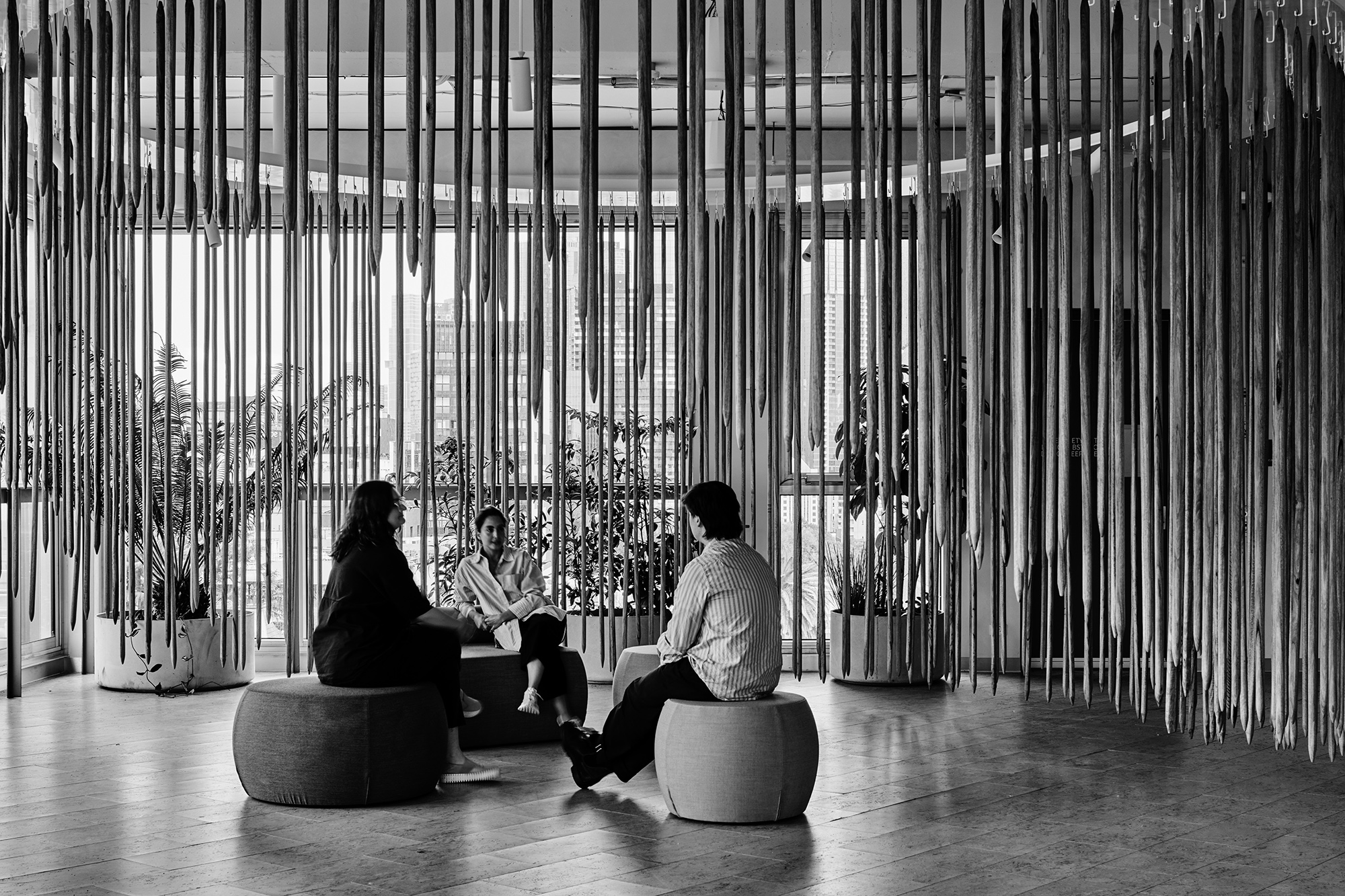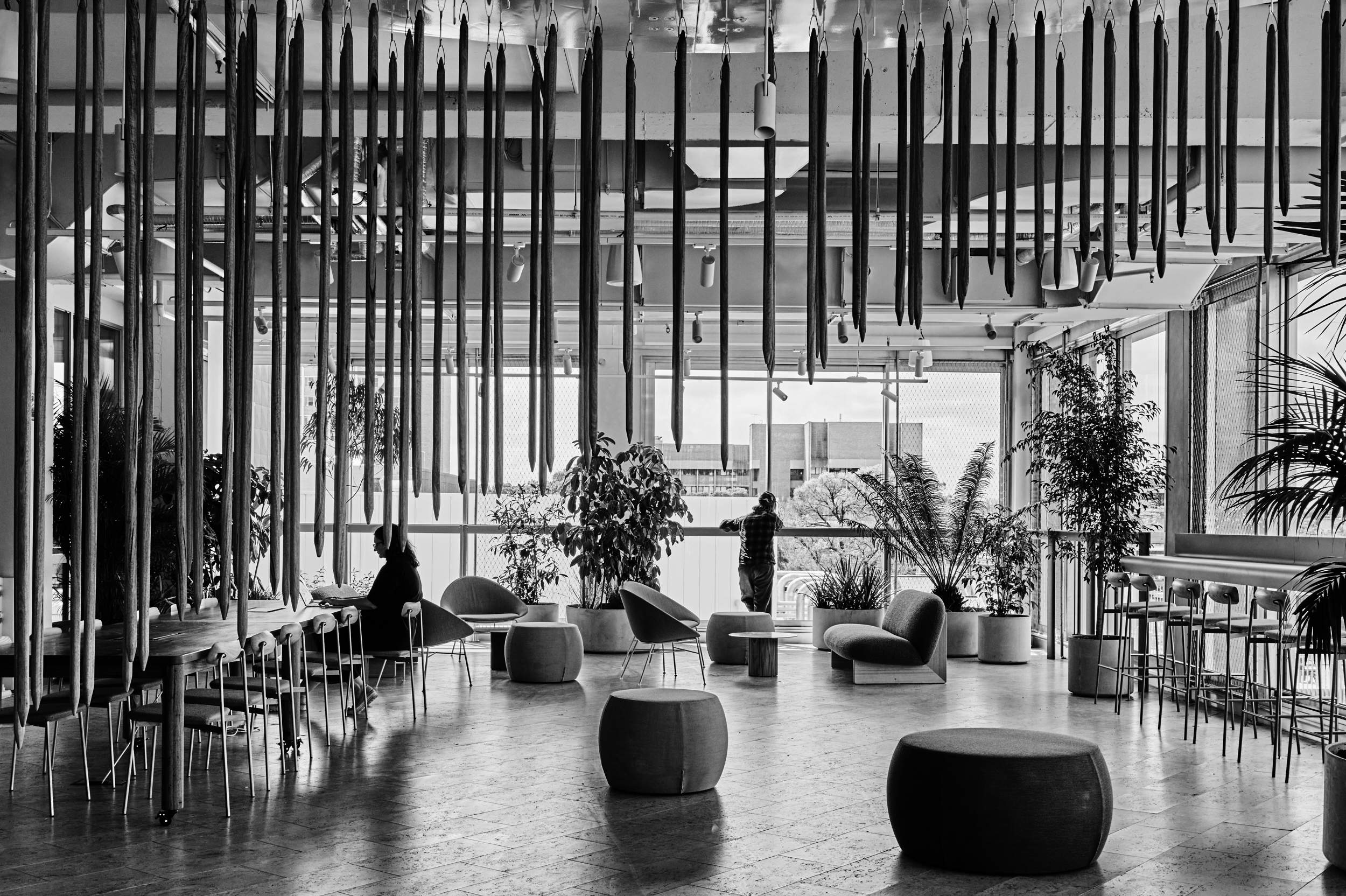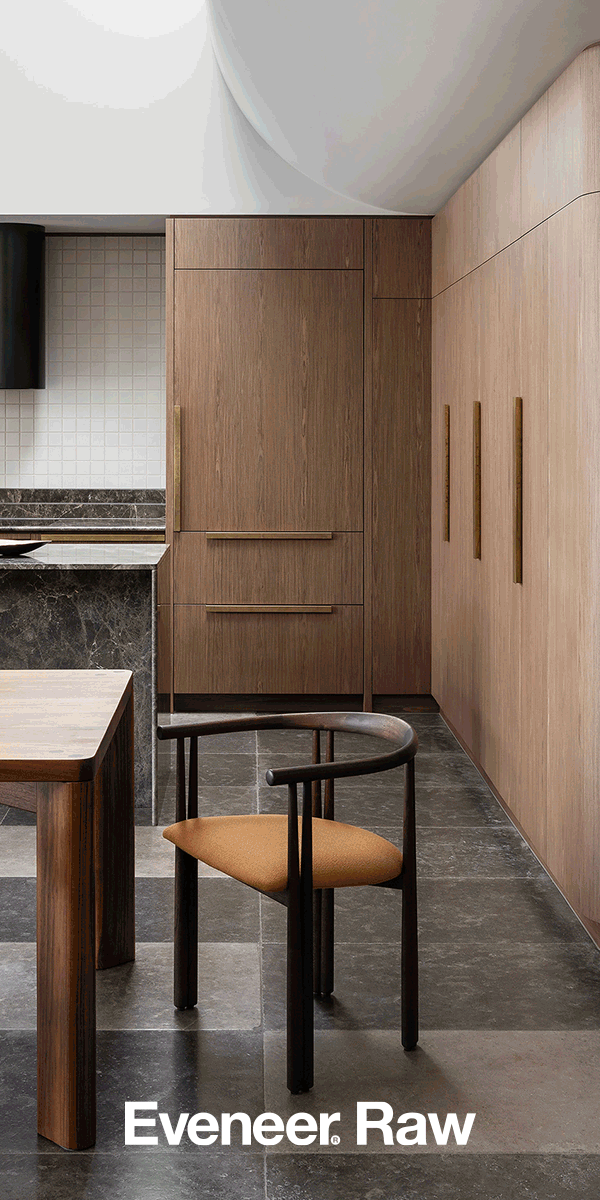The ways people live together, relate to each other, share common spaces, and resolve disputes in multi-title buildings illustrate the 'mechanics' of...
Profile: Sarah Lynn Rees
Kate Goodwin catches up with architectural practitioner, advocate and Palawa woman Sarah Lynn Rees – recipient of the Australian Institute of Architects’ Victorian Chapter 2023 President’s Prize – to discuss her commitment to Indigenising the built environment, the importance of practising with integrity and the power of listening.
Essay
Kate Goodwin
Photography
Tom Blachford

Sarah Lynn Rees is a reluctant interview subject. She doesn’t want to be put on a pedestal and only shares her story for what it might mean for others, particularly emerging First Nations architects. As she generously reflects on her life’s journey, it becomes clear how she has learnt from experiences to build wisdom, resilience and her own particular way of being in the world.
Sarah is a Palawa woman descending from the Trawlwoolway people of north‑east Tasmania. Her résumé is undeniably impressive, particularly when considering she graduated less than a decade ago. Sarah is a Senior Associate at Jackson Clements Burrows Architects, a lecturer at Monash University and Co‑Chair of the Australian Institute for Architects First Nations Advisory Working Group. She is the curator of the BLAKitecture series at MPavilion, Director of Parlour and Co‑ Creator of Deadly Djurumin Yarns – a forum for the perspective of First Nations women working in the built environment – and a member of myriad advisory panels, amplifying her claim that she works best in fifth gear.
Throughout our interview Sarah is thoughtful; she takes care with her words and is mindful of the responsibility to represent the voices of others through her various roles. Her Elders tell her they cannot see themselves represented in the built environment around them and she recognises that architecture and planning have, for too long, been complicit in taking away the agency and identity of Country. Regardless, she believes architecture has the power to give it back and has made it her mission to bring about positive change.
Sarah has a deep‑seated resistance to the egocentric tendencies often seen in architects – characteristics that echoed her father’s early misgivings of her chosen profession. As a builder, Sarah’s father offered her sage advice around the profound impact that one’s presence and tone of assertion has on collaborative relationships and outcomes. She’s learnt that being effective in this industry involves “careful negotiation of listening and sharing – opening your mind up to someone’s point of view and then opening their mind up to yours”.
As our conversation unfolds, I observe someone who lives through her heart, hands and mind in equal measure. Sarah recalls that she has always been drawn to innovative problem‑solving and creation; she still watches with wonder as her father fills reams of paper with technical drawings, endlessly finding a solution to a problem and then constructing it. Similarly, Sarah finds reprieve in knitting, tufting, crocheting, weaving and screen‑printing – processes involving the creation of immediate material outcomes. As a child, she danced, sang and acted, all of which equipped her for the limelight she would experience in her professional life. More importantly it equipped her with the invaluable ability to step into another’s shoes and appreciate perspectives beyond one’s own experience.
The opportunity for her to connect architecture with her way of being in the world, perhaps unusually, occurred on the other side of the world. As a Charlie Perkins Scholar at Cambridge University, she conducted a two‑ year design‑led research project looking at public housing in the Northern Territory with a focus on Yuendumu, a remote Indigenous community 300km northwest of Mparntwe, Alice Springs. This involved studying the government system that procured and controlled housing. She spent seven months living in the community before presenting her findings back in Cambridge. Chatting with Sarah now, the difficulties she experienced at Cambridge University are palpable. While she was free of some elements of the racism she faced in Australia, in the elitist atmosphere of Cambridge, Sarah confronted a stark cultural disconnect. The ignorance around Australian First Nations culture forced her to navigate a landscape where both her identity and the work she was presenting was frequently misunderstood. It was a salient experience through which she understood that even well‑ intentioned advice is tainted by personal biases. Simultaneously, she faced the constraints of being a master’s student attempting to ingle‑handedly devise a practical solution to an entrenched and complex socio‑cultural problem after only a seven‑month stay in Yuendumu. The only thing she felt she could do for the Warlpiri people who had generously shared their lives and worldview, at their own cost, was to tell the stories she had been given permission to share. It’s evident that Sarah remains connected and committed to the housing issues of the Warlpiri people, and while it may have felt inadequate in the circumstances, as she says, “it is the world we live in at the moment”.
Instead of returning to a country that systematically subjected people to inhumane housing, she identified two architects she admired in London who challenged the status quo: Peter Cook (of Archigram fame) and the now late Will Alsop. She ended up working for the latter – a protégé of Cedric Price – a larger‑than‑life figure with a keen intellect, brilliant imagination and artist’s eye. My own visits to Will’s aLLDesign office, and the adjacent bar event space he created, always left me inspired. Ideas seemed to flow – there was colour and possibility – and the place evoked a desire to stand up and shake the establishment. It makes sense that Sarah found a comrade in Will, as she admits she had the tendency to drive her tutors mad by constantly asking “why?”. To this day, she is never satisfied with being told “that’s just how it’s done”.
At aLLDesign Sarah discovered a studio environment that made sense to her. Design sessions would unfold around a table with Mozart or some other classical music playing, a large half‑finished painting on the wall, a bottle of wine or two, and open conversation with her colleagues – sharing ideas and listening to one another. It reminded her of an Indigenous way of being – sitting comfortably in the grey, allowing time and space for solutions to reveal themselves.
Will encouraged Sarah to be herself – not to try to be a cookie cutter architect. In the final line of her reference letter, Will wrote that “Sarah is belligerent in a good way” and, knowing Will, that was the highest praise. I do suspect he learnt from her too. Sarah has had many mentors – often strong and inspiring females. She highlights the value of having mentors with diverse ages and experience who can show you different ways to be in the world – and the beauty of the relationship becoming reciprocal and one of friendship.
After two years in London, the pull of her homeland proved irresistible. Her time abroad had expanded her horizons, adding layers of complexity and a broader perspective to her practice, and she now had to rediscover her place in Australia. Conversations around reconciliation, recognition and the role of First Nations perspectives in architecture were finally gaining momentum after many years of hard work by a committed few. She armed herself with a variety of experiences, working for different architectural practices and a consultancy, curating a series for the MPavilion and working closely with Traditional Owner organisations to understand their unique worldviews and requirements.
The next chapter in Sarah’s journey opened through an opportune meeting with her old boss Jon Clements that came about through her “cherished mentor and friend” Alison Cleary. Jon asked her when she was coming back to Jackson Clements Burrows Architects – an award‑winning architecture, interior and urban design studio based on Wurundjeri Woi‑wurrung Country in Richmond, Melbourne. Her terms were clear: the office must undergo a process of cultural learnings to transform into a studio that Indigenous people wanted to work with, and she required time for her advocacy work alongside practice. He responded promptly with a contract and neither have looked back.
While, like many First Nations Australians, Sarah invariably finds herself having to educate non‑ Indigenous people, she is also always learning, listening, building her knowledge and being guided by mentors to ensure she is operating from an informed position. She knows she must work from the inside, seeking first to teach, to understand pre‑existing barriers within the curriculum before she can rectify them. Now, she is part of implementing systemic change in the education system which, in turn, makes her a better teacher as she develops and delivers her design studio. She impresses upon her students the need to understand the values that drive decision‑making in a project and the importance of completing a cultural return brief – especially when working on Indigenous projects, where the values of Country are considered and articulated alongside the values of the practitioner and client. She advocates for seeking work that aligns with one’s own values – while possessing the humility to understand that the client’s values must come first – and to never let the values of Country be lost in the process, even if the client does not yet appreciate their importance.
The greatest piece of advice Sarah ever received is that you can’t listen to somebody else and the voice inside your head at the same time. First, you must listen – you don’t always need to have something to say, or an answer for everything. She doesn’t take anything for granted; she speaks of the luxury of now being heard and having others walking alongside her. But after an hour of chatting with Sarah, her apparent gravitational pull doesn’t seem arbitrary. She holds space for others and leads with a gracious amount of honesty, humility and integrity that leaves one compelled to listen and act together to bring about change.
jcba.com.au

Portrait of Sarah Lynn Rees

Sarah was integral to the design of the AFSE in her role as Indigenous Design Lead

The AFSE creates a space for staff and Fellows to live, learn and collaborate. The space is an engaging, inspiring and creative environment for staff and visitors, and a welcoming place for Indigenous and non-Indigenous leaders from Australia, New Zealand and across the Pacific.

